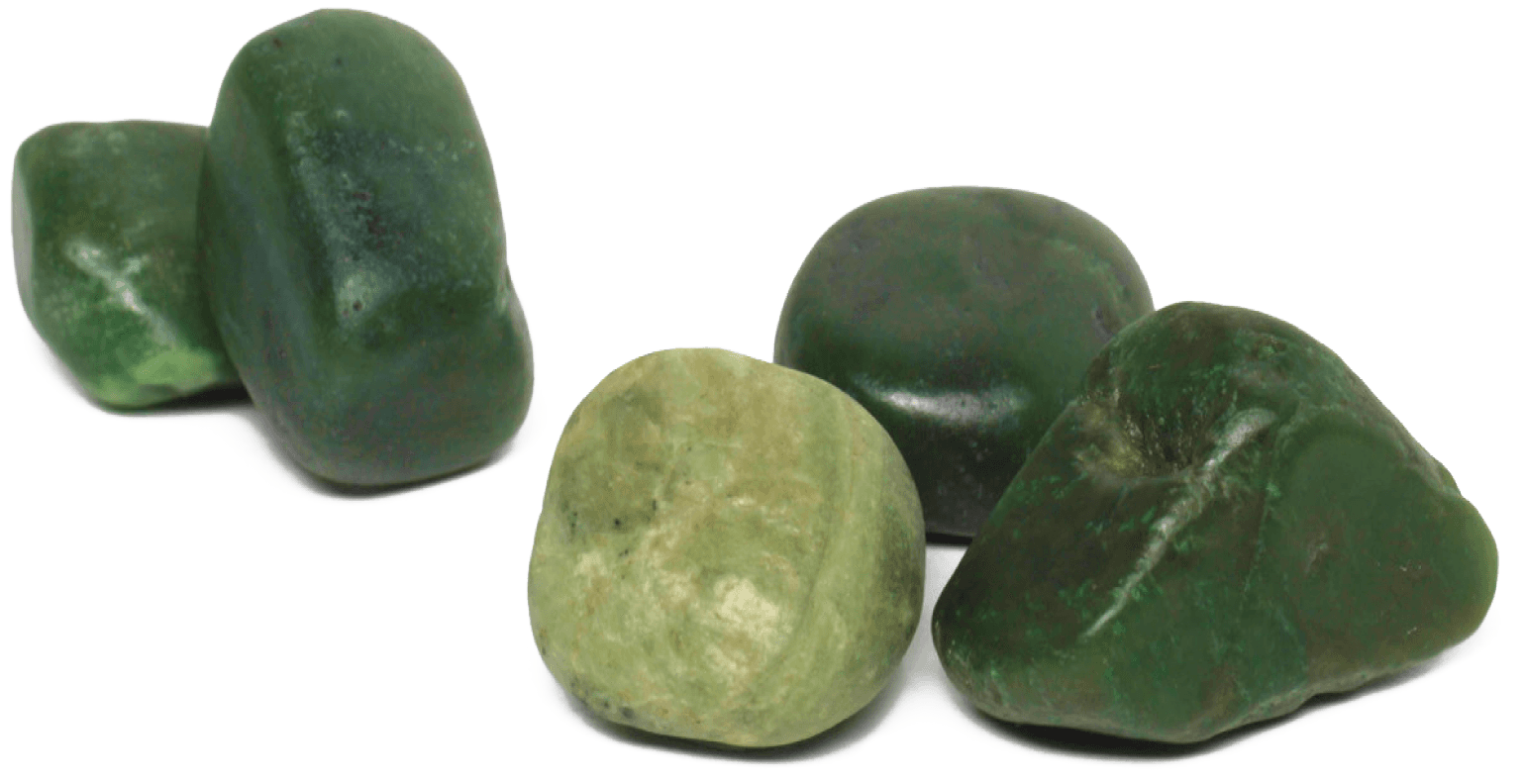Marvel Of Nature: The Allure Of Asteria Jade
Asteria jade, a captivating gemstone, mesmerizes with its enchanting hues and rich history. Known for its translucent beauty, this gemstone has been cherished by cultures around the world for centuries. Its name, derived from the Greek word "Aster," meaning star, reflects the star-like patterns that can sometimes be seen within the stone. This unique feature, coupled with its vibrant colors, makes asteria jade a sought-after treasure among gem enthusiasts and collectors alike.
The allure of asteria jade extends beyond its appearance; it holds significant cultural and historical importance. Revered in ancient civilizations, it was often used in art and religious artifacts. Today, it continues to be a symbol of elegance and mystique, often associated with serenity and wisdom. The gemstone's rarity and the intricate process of its formation add to its value, making it a prized possession for those who appreciate the finer things in life.
In the world of gemstones, asteria jade stands out not only for its beauty but also for its connection to nature and spirituality. This article delves into the fascinating aspects of asteria jade, exploring its origins, characteristics, and the myths surrounding it. Whether you are a seasoned gem collector or a curious reader, join us on this enlightening journey as we uncover the secrets of asteria jade, a true marvel of nature.
- Unveiling The World Of Sophie Rain Nude Insights And More
- Movierulz Kannada Movie 2024 A Comprehensive Guide To The Upcoming Releases
Table of Contents
- History and Origin of Asteria Jade
- What Makes Asteria Jade Unique?
- Cultural Significance Across Civilizations
- The Intricate Formation Process
- Exploring the Color Variations
- Does Asteria Jade Have Spiritual and Healing Properties?
- How is Asteria Jade Identified and Graded?
- Modern Applications and Uses
- How to Care for Your Asteria Jade?
- Understanding the Market Value of Asteria Jade
- Famous Asteria Jades in History
- Myths and Legends Surrounding Asteria Jade
- Frequently Asked Questions
- Conclusion
History and Origin of Asteria Jade
The history of asteria jade is as rich and colorful as the gemstone itself. Believed to have originated in the ancient riverbeds of Asia, asteria jade has been a symbol of luxury and power throughout history. Cultures such as the Chinese and the Mesoamericans held jade in high regard, using it in everything from ceremonial artifacts to personal adornments.
The Chinese, in particular, viewed jade as the "Stone of Heaven," associating it with purity and moral integrity. It was often used in the creation of intricate carvings and jewelry, signifying wealth and status. Mesoamerican civilizations, such as the Maya and the Aztecs, also prized jade, incorporating it into masks, weapons, and religious icons. The historical journey of asteria jade from these ancient societies to modern times is a testament to its enduring appeal and significance.
What Makes Asteria Jade Unique?
Asteria jade is distinguished by its unique optical phenomena known as asterism. This effect occurs when light interacts with the stone's internal structure, creating a star-like pattern that seems to dance across its surface. This rare feature sets asteria jade apart from other gemstones, making it a coveted piece for collectors and jewelers.
In addition to asterism, asteria jade is known for its vivid color spectrum, ranging from deep greens to vibrant blues and even rare shades of lavender. This variety is due to the presence of different minerals within the stone, each contributing to its overall appearance. The combination of asterism and color makes each piece of asteria jade truly one-of-a-kind, enhancing its appeal to gem lovers worldwide.
Cultural Significance Across Civilizations
Throughout history, asteria jade has been revered in various cultures, each attributing different symbolic meanings to the gemstone. In Chinese culture, jade is associated with nobility, immortality, and harmony. It is believed that wearing jade can bring good fortune and protect against evil spirits. This cultural reverence is evident in the numerous jade artifacts unearthed from ancient Chinese tombs, often intricately carved and designed.
In Mesoamerican cultures, jade was considered more precious than gold. It symbolized life and fertility, playing a central role in religious ceremonies and rituals. The belief in jade's protective and healing properties was so strong that it was often placed in the mouths of the deceased as a symbol of resurrection and eternal life.
The Intricate Formation Process
The formation of asteria jade is a complex geological process that occurs over millions of years. It begins deep within the Earth's crust, where high pressure and temperature conditions cause minerals to crystallize and form jadeite, the primary mineral in jade. During its formation, the presence of certain elements and impurities leads to the development of the stone's characteristic colors and patterns.
Asterism, the unique star-like phenomenon, is a result of the alignment of fibrous or needle-like inclusions within the stone. These inclusions are typically composed of rutile, and their precise orientation is what allows for the stunning optical effect when light hits the gemstone at certain angles.
Exploring the Color Variations
The color variations of asteria jade are as diverse as they are mesmerizing. While the most commonly recognized color is green, asteria jade can also be found in shades of blue, lavender, yellow, and even red. The presence of trace elements such as chromium and iron is responsible for these vivid colors, with each hue lending its own unique charm to the stone.
Green asteria jade, often referred to as "imperial jade," is the most sought-after variety, known for its deep, rich color and exceptional translucency. Blue jade, on the other hand, is prized for its calming and serene appearance, while lavender jade exudes a sense of mystery and allure. The rarity and beauty of these colors contribute to the gemstone's high value and desirability in the market.
Does Asteria Jade Have Spiritual and Healing Properties?
Asteria jade is not only valued for its aesthetic appeal but also for its purported spiritual and healing properties. Many believe that jade possesses the ability to promote emotional balance and mental clarity. It is thought to enhance one's intuition and encourage self-discovery, making it a popular choice among those seeking spiritual growth.
In addition to its spiritual benefits, jade is often used in holistic healing practices. It is believed to have a calming effect on the nervous system, helping to reduce stress and anxiety. Some also claim that jade can aid in physical healing, particularly in boosting the immune system and improving overall well-being. While scientific evidence supporting these claims is limited, the belief in jade's healing properties continues to be embraced by many.
How is Asteria Jade Identified and Graded?
Identifying and grading asteria jade involves a meticulous process that takes into account several factors, including color, texture, translucency, and the presence of asterism. Gemologists use a variety of tools and techniques to assess these characteristics, ensuring that each piece of jade is accurately evaluated.
The most important factor in grading jade is its color, with the most desirable pieces exhibiting a vibrant, even hue. Texture is also crucial, with the finest jade having a smooth, even surface without visible inclusions. Translucency, or the ability of light to pass through the stone, is another key consideration, with higher translucency often indicating superior quality.
Modern Applications and Uses
In contemporary times, asteria jade continues to captivate and inspire, finding its way into a wide range of applications. From jewelry to decorative art, this gemstone's versatility and beauty make it a popular choice for designers and artists alike.
In the world of fashion, asteria jade is often used to create stunning pieces of jewelry, including necklaces, bracelets, and rings. Its unique colors and patterns make it a standout choice for those looking to make a statement with their accessories. Beyond fashion, jade is also used in home decor, with carved jade sculptures and ornaments adding a touch of elegance and sophistication to any space.
How to Care for Your Asteria Jade?
Proper care and maintenance are essential to preserving the beauty and longevity of asteria jade. Although jade is a relatively durable stone, it requires special attention to prevent damage and maintain its luster.
- Avoid exposing jade to harsh chemicals or extreme temperatures, as these can cause discoloration or damage to the stone.
- Clean your jade jewelry regularly with a soft, damp cloth to remove dust and oils.
- Store jade pieces separately from other jewelry to prevent scratching and chipping.
- Have your jade jewelry professionally polished and inspected periodically to ensure its condition and authenticity.
Understanding the Market Value of Asteria Jade
The market value of asteria jade is influenced by several factors, including its color, clarity, and overall quality. As a rare and highly sought-after gemstone, jade commands a premium price, with the finest specimens fetching substantial sums at auctions and in retail settings.
Green jade, particularly the imperial variety, is the most valuable, with its rich color and translucency making it a top choice for collectors. Blue and lavender jade, though less common, also hold significant value, particularly when they exhibit strong asterism and minimal inclusions.
Famous Asteria Jades in History
Throughout history, several pieces of asteria jade have gained fame for their beauty and significance. Among these is the "He Shi Bi," a legendary jade disc from ancient China that played a pivotal role in the unification of the country. This artifact, known for its flawless craftsmanship and historical importance, remains a symbol of cultural pride.
Another notable piece is the "Jadeite Cabbage," a masterfully carved sculpture housed in the National Palace Museum in Taiwan. This exquisite work of art showcases the skill and creativity of jade artisans, capturing the delicate details of a cabbage and an insect in stunning jadeite.
Myths and Legends Surrounding Asteria Jade
Asteria jade has long been shrouded in myths and legends, with many cultures attributing mystical properties to the gemstone. In Chinese folklore, jade is said to be the tears of dragons fallen from the sky, embodying the essence of heaven and earth. It is also believed to have protective powers, warding off evil spirits and bringing good fortune to its wearer.
In Mesoamerican mythology, jade was associated with the gods and the afterlife, believed to be a conduit between the mortal and divine realms. This connection to the spiritual world made jade a central element in religious rituals and offerings, further cementing its status as a sacred stone.
Frequently Asked Questions
- What is the difference between asteria jade and regular jade?
Asteria jade is distinguished by its unique asterism, a star-like optical effect not commonly found in regular jade. - How can I tell if my jade is genuine?
Authentic jade is often cool to the touch and has a smooth, waxy texture. Professional appraisal is recommended for accurate identification. - Is asteria jade a good investment?
Due to its rarity and cultural significance, asteria jade can be a valuable investment, especially high-quality pieces with strong asterism. - Can asteria jade be worn every day?
Yes, but with proper care. Avoid exposing it to harsh chemicals and store it safely to prevent damage. - What are the healing properties of asteria jade?
Jade is believed to promote emotional balance and physical well-being, though scientific evidence is limited. - Where can I buy asteria jade?
Reputable jewelers, auctions, and online platforms specializing in gemstones are good places to start.
Conclusion
Asteria jade remains a timeless symbol of beauty, culture, and spirituality. Its unique characteristics and rich history continue to captivate those who encounter it, making it a cherished gemstone across the globe. Whether you seek its beauty for adornment or its mystical properties for personal enrichment, asteria jade offers a connection to the past and a promise of elegance that transcends time.
- Sex Video Telugu Insightful Information And Cultural Perspectives
- The Inside Scoop On Brooke Monk Leaks Revealed

Adrianna Jade Wiki, Age, Boyfriend, Net Worth, Photos, Videos

New Zealand Jade Polished Toki Mountain Jade NZ